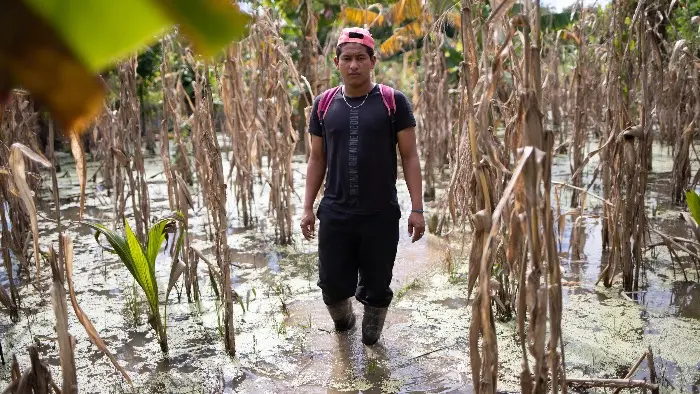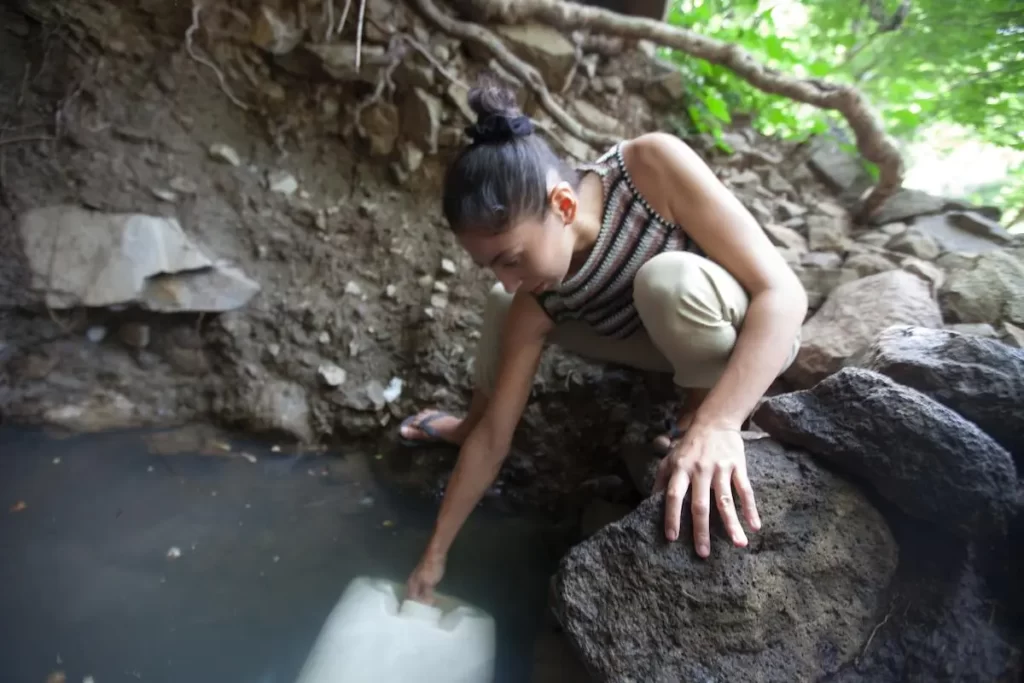Edgardo Barahona in Dos Bocas, Santa Rosa de Aguán, Honduras. Standing crops of maize and beans have been lost across the region because of the floods caused by hurricanes Eta and Iota. Some crops rotted, some dried out, many crops sprouted on the their stems before they could be harvested, most of the staple crops have been lost. Nutrients have been washed out of the soil too and a huge wave of fungal diseases like canker and leaf rust are just beginning. Cash crops like coffee are badly affected as well as food for local consumption. Photo: Sean Hawkey/WCC
“We’re in the middle of the river, in the middle of what was the river—it shouldn’t be like this should it?” asks Ramírez. “Even when it rains, which is rare now, the water disappears quickly, the crops fail without irrigation, but now the wells keep drying up so we can’t irrigate. I’ve just taken my cattle away; they can’t survive here without water. In fact we can’t survive here without water.”
The first day, “Drought” depicts how communities in Nicaragua and Honduras are facing loss of livestock, dying crops, and water scarcity.
Five more days of new photo collections will become available as well, expanding the repertoire of stories and images.
As media discussions around COP26 tend to focus on peripheral details of the negotiations, it is easy to forget what climate change is about for ordinary people around the world, particularly the poorest, said a concerned Rev. James Bhagwan, general secretary of the Pacific Conference of Churches.
“These images remind us of the devastating impacts of climate change, and how dangerous it is for all of us if we don’t act now,” he said. “Let’s not lose sight of the reality of climate chaos. We call on negotiators to agree on urgent and concrete actions to curb greenhouse gas emissions.”
Let’s not lose sight of the reality of climate chaos.
Climate change isn’t an abstract notion for the millions of people who have already suffered its effects through droughts, floods, hurricanes, wild fires, the failure of agriculture and the destruction of infrastructure.
Media discussions are tending to focus on peripheral details of the negotiations and negotiators and it is easy to forget what climate change is about for ordinary people around the world, particularly the poorest.
“These images remind us of the devastating impacts of climate change, and how dangerous it is for all of us if we don’t act now. Let’s not lose sight of the reality of climate chaos. We call on negotiators to agree on urgent and concrete actions to curb Greenhouse Gas emissions” said James Bhagwan, Gen. Sec. of the Pacific Conference of Churches.
Click here to visit the exhibition (daily updates 9 – 14 November)
Source
Image Source
Tags: Photo exhibition portrays stark reality of climate change, World Council of Churches



